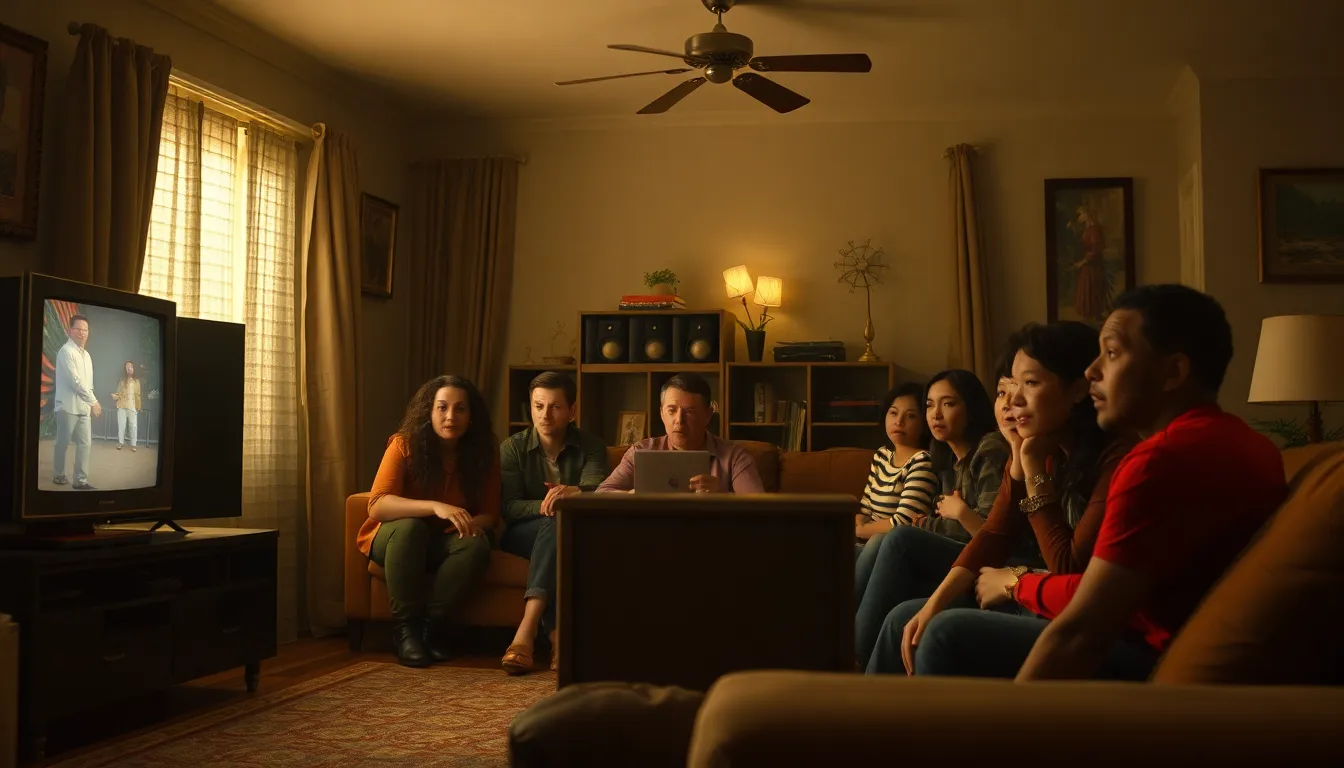Table of Contents
ToggleTV cliffhangers have a way of keeping audiences on the edge of their seats, hearts racing and popcorn forgotten. Just when viewers think they’ve figured it all out, a plot twist sends them spiraling into a whirlwind of suspense and disbelief. Who can forget that moment when a beloved character’s fate hangs in the balance, leaving fans shouting at their screens?
Definition of TV Cliffhanger Moments
TV cliffhanger moments create suspense by leaving critical plot points unresolved at the end of an episode or season. They often involve shocking revelations or precarious situations that leave audiences eager for answers. A cliffhanger’s primary purpose is to evoke emotional reactions, compelling viewers to speculate about characters’ fates and future developments.
When a show’s protagonist faces danger or an unexpected twist occurs, it heightens the stakes and captivates the audience. This technique encourages discussions among fans, who dissect every detail while awaiting the next episode. Key examples include pivotal character deaths, betrayals, or sudden revelations that redefine the story.
Cliffhangers function as narrative tools that strengthen engagement. With a successful cliffhanger, shows maintain audience interest, prompting viewers to continue tuning in. This approach to storytelling not only amplifies viewer dedication but also generates buzz on social media platforms, creating a community eager for the latest updates.
Many successful TV series leverage cliffhangers, such as “Game of Thrones” or “Breaking Bad,” showcasing their effectiveness in gripping storytelling. Through these moments, character arcs and emotional investments deepen, ensuring that the audience remains connected and invested in unfolding narratives.
Ultimately, TV cliffhangers serve to build anticipation and prolong viewer engagement, making them an essential element in modern television storytelling. They influence audience behavior and viewing patterns, ensuring that fans discuss and share their theories long after the credits roll.
Most Iconic TV Cliffhanger Moments

Iconic cliffhanger moments leave a lasting impact on viewers. These moments often define the viewing experience, prompting intense discussions and anticipation.
Dramatic Plot Twists
Dramatic plot twists create unforgettable cliffhangers. Viewers often remember scenes where a main character unexpectedly dies or reveals a shocking secret. Shows like “The Sopranos” highlight this; the reveal of a traitor among the family provoked outrage and speculation. “Lost” utilized this technique effectively by introducing mysteries that shifted viewer perceptions entirely with each episode. Such revelations elevate tension and keep audiences guessing through seasons, enhancing their commitment to the narrative.
Character Development
Character development plays a significant role in cliffhanger moments. When a beloved character faces betrayal or an unexpected challenge, viewers feel the emotional weight. “Friends” showcased this when Ross confronts his feelings for Rachel; fans were left wondering about their future. “The Walking Dead” often placed characters in life-or-death situations, deepening viewers’ connections to them. As characters evolve, their choices lead to gripping cliffhangers that maintain audience engagement and investment.
Impact of Cliffhangers on Viewership
Cliffhangers significantly influence viewership by intensifying emotional reactions and fostering audience investment. They create a sense of urgency that keeps fans eagerly anticipating the next episode.
Viewer Engagement
Viewer engagement surges when cliffhangers leave unresolved storylines. Fans are more likely to discuss theories on social media and in forums. These conversations amplify the buzz surrounding a show, turning viewers into active participants rather than passive watchers. Engagement spikes, especially with shocking twists, as audiences feel a deeper connection to the narrative. As seen with “Game of Thrones,” cliffhanger moments transform viewers into invested fans, eager to share their excitement and speculation.
Ratings and Audience Retention
Ratings often climb following dramatic cliffhangers, showcasing their effectiveness in drawing in viewers. Shows that employ cliffhangers tend to retain audiences across seasons, maintaining high viewer loyalty. Statistics suggest series with strong cliffhanger moments can experience up to a 30% increase in viewership for subsequent episodes. This pattern underscores the value of cliffhangers in building anticipation and reducing drop-off rates. For instance, “Breaking Bad” exemplifies how suspenseful endings drive viewership and prolong audience commitment to the storyline.
Techniques for Creating Effective Cliffhangers
Creating effective cliffhangers requires strategic planning and execution. Writers often rely on specific techniques to enhance suspense and maintain viewer engagement.
Foreshadowing
Foreshadowing sets the stage for impactful cliffhangers. It subtly hints at future events, creating anticipation during earlier episodes. By introducing cues or symbols, viewers can pick up on underlying tensions without complete understanding. In “The Sopranos,” for example, characters’ dialogue or actions often preview inevitable conflicts, intensifying viewer speculation. Employing this technique enables creators to lay the groundwork for shocking revelations, making eventual cliffhangers feel earned rather than abrupt.
Timing and Pacing
Timing and pacing greatly influence the effectiveness of cliffhangers. Well-placed cliffhangers typically occur at key moments, maintaining momentum throughout episodes. Writers ensure these moments align with character development or plot progression, allowing emotional stakes to rise naturally. For instance, a tension-filled scene where a character faces a critical decision can amplify anticipation. Delaying resolution until a suspenseful moment builds urgency and compels viewers to return. Shows like “Lost” excel in pacing, leaving critical questions hanging just before commercial breaks or season finales, effectively hooking the audience.
TV cliffhanger moments have a unique power to captivate audiences and spark intense emotional reactions. They create a sense of urgency that keeps viewers eagerly awaiting the next episode while deepening their investment in the story and characters. As fans engage in discussions and theories, the anticipation builds, further enhancing the viewing experience.
These dramatic moments not only elevate the stakes but also serve as vital narrative tools that ensure shows remain memorable. With their ability to provoke speculation and emotional responses, cliffhangers will continue to be a driving force in the world of television, shaping how stories unfold and how audiences connect with them.




